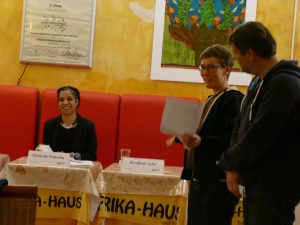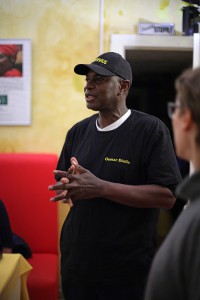The Yogyakarta Principles need an intersex update
deutsche Fassung
Human rights apply to all humans, or so it is said. For centuries, however, what this really meant was that human rights applied only to men, and only to those men who were not enslaved or colonized. The fact that human rights now apply to women and people of color, for example, is due to the success of the women’s and civil rights movements.
The Yogyakarta Principles were formulated in 2006 by a group of international human rights experts who had gathered in the Indonesian city of that name. Its 29 principles clarify what human rights mean with respect to sexual and gender minorities. The Yogyakarta Principles are a set part of human rights work. They describe what states would have to do if human rights were in fact applied to people independently of their sexual orientation or gender identity.

What about intersex people?
The letter “I” is being added ever more frequently to the acronym LGBT. The “I” stands for intersex people, who are pathologized and stigmatized by the medical category “Disorders of sexual development” (DSD). On account of anatomical, hormonal or chromosomal features, intersex people are viewed as neither completely female nor completely male. Intersex bodies are outside the binary gender system, which can lead to serious medical and legal consequences. Parents are pressured to approve gender-assignment operations and hormonal treatments. Babies, children and adolescents have a gender imposed upon them.
 Popoola’s novel tells the story of Karl, a young black Londoner, who travels to Nigeria for the first time at the age of 18 to visit his father, whom he has never met, in Port Harcourt. Karl is a trans man whose passport still shows the sex he was assigned at birth. In Port Harcourt he gets a serious case of culture shock, remains much longer than planned, falls in love, and loses contact with his best friend Abu in London. It is a novel about friendship and what it means to grow up black in London today.
Popoola’s novel tells the story of Karl, a young black Londoner, who travels to Nigeria for the first time at the age of 18 to visit his father, whom he has never met, in Port Harcourt. Karl is a trans man whose passport still shows the sex he was assigned at birth. In Port Harcourt he gets a serious case of culture shock, remains much longer than planned, falls in love, and loses contact with his best friend Abu in London. It is a novel about friendship and what it means to grow up black in London today. 
























